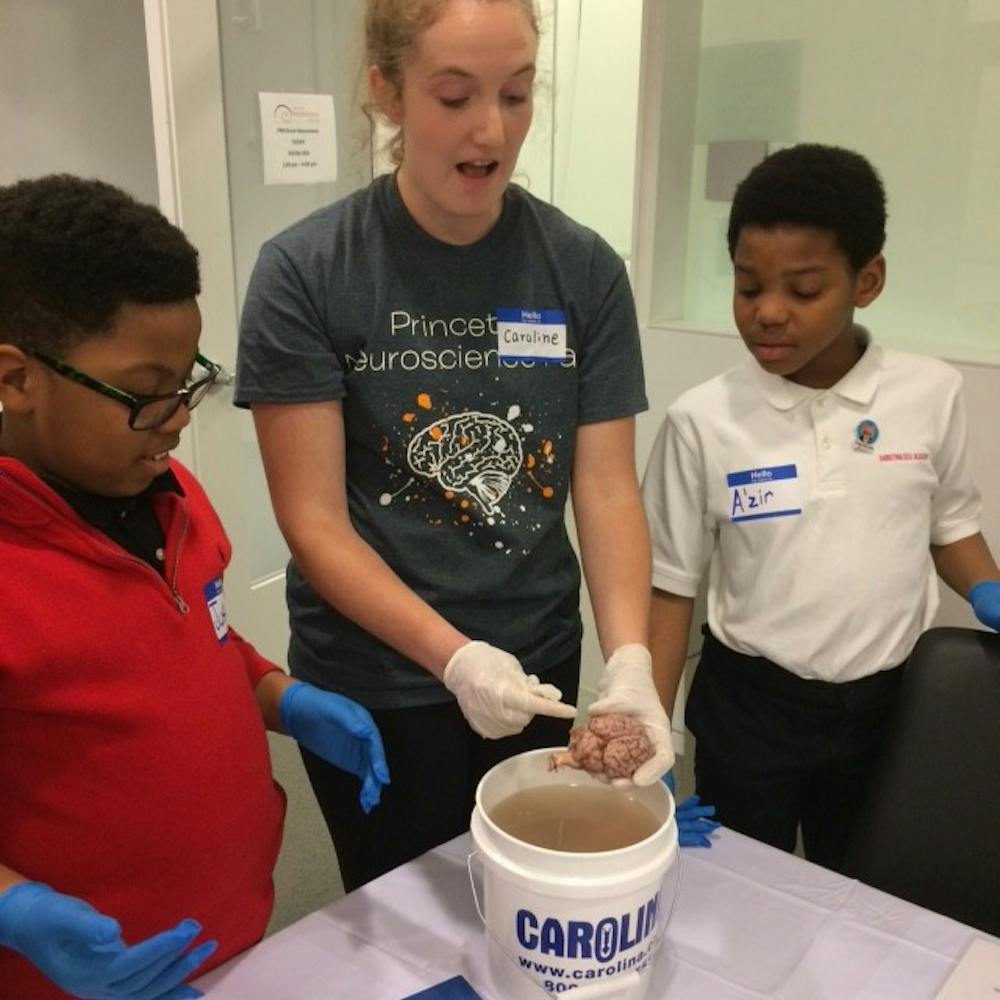On Friday, March 31, elementary school students without any previous exposure to the field of neuroscience were guided in constructing a network of neurons using pipe cleaners. The exercise was part of an effort by University students to expose students at the Christina Seix Academy to a field often excluded to more privileged environments.
The Princeton Neuroscience Network, a student-led group that fosters greater awareness and appreciation for neuroscience, held its first major outreach event on March 31. The fourth-grade students from Christina Seix Academy, a school founded to provide education to children from low-income, single-parent households, were brought to the Princeton Neuroscience Institute to engage in a series of activities about science and the brain during the University's first Neuroscience Fair.
"I liked it a lot. It taught us a lot of things we didn't know before. We went in not knowing a lot about the brain, but we came out knowing much more," said Serenity Davis, a student at Christina Seix.
Heads of the PNN Outreach Committee Chi-Chi Azoba '18 and Selam Zenebe-Gete '18 explained that it was important to them as STEM students to spread awareness of neuroscience and to share the University's many resources.
“As women of color, getting students to come here and see us perform as student leaders has been empowering” Azoba explained.
Azoba and Zenebe-Gete, both juniors concentrating in Molecular Biology at the University, have been planning this event since their freshman year, when they started the Outreach Committee of Princeton Neuroscience Network after meeting one of PNN’s co-founders, Seong Jang ‘18.
“We had this vision freshman year to expose younger students to neuroscience since neuroscience had never been introduced to us as children,” Azoba noted.
Since its creation two years ago, PNN has been engaging with University students through study breaks, movie screenings with professors, and research symposiums. According to Jang, however, the group felt that it was time for PNN to engage with a wider community.
“We want PNN to grow from all branches,” explained Jang, referring to PNN’s events, research, and outreach efforts.
Jang hopes that through outreach efforts such as this fair, those interested in neuroscience at the University can enhance their experiences while positively impacting the surrounding community.
Consisting of a series of blocks or activities the children rotated through, the Neuroscience Fair engaged students in a variety of ways as they learned about the different parts of the brain, their functions, and how these parts of the brain affect perception and understanding. For example, one block allowed the children to watch Princeton students dissect a sheep brain, during which PNN volunteers showed them the functions of each part of the brain. Another block allowed the children to monitor the electrical activity of muscles using a Muscle SpikerBox.
Students of Christina Seix Academy left the University not only with a stronger understanding of the brain and of the field of neuroscience, but with an appreciation for science and a desire to pursue neuroscience in the future. In addition, exposure to the University community delighted Academy students, who expressed their fascination with the campus.

"Have you seen the movie "Groundhog Day"? I wish today was my groundhog day so I could come here every day!" said Academy student Justin Hogue.
Some children, according to teachers at the academy, have even set goals since their visit of becoming students at the University someday.
"The Neuroscience Fair sparked something in our students. It made them curious and excited to learn more about their brain and learning, " said Nicole Morillo, a teacher at Christina Seix.
"The students absolutely loved every minute of the Neuroscience Fair. It broadened their understanding and increased their enthusiasm about science," said Ashley Umberger, another teacher at the Academy.
Seeing their project come to fruition with such success, PNN leaders said they encourage and are optimistic about their organizational goals. One of these goals is to hold a conference here at the University that will bring together professors, students, and researchers from other institutions who are interested in neuroscience.








